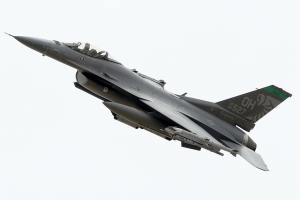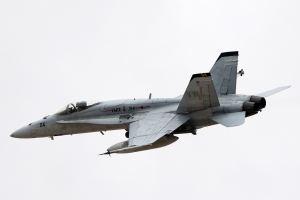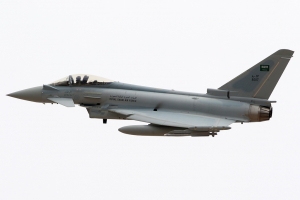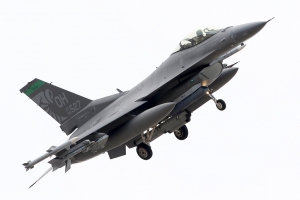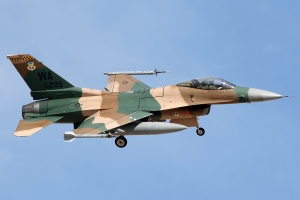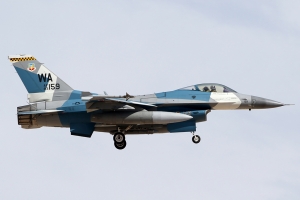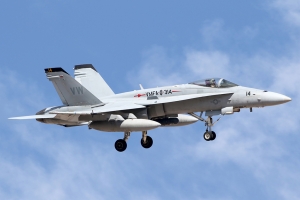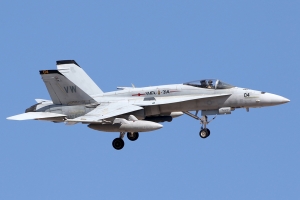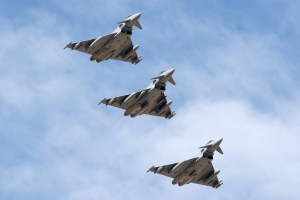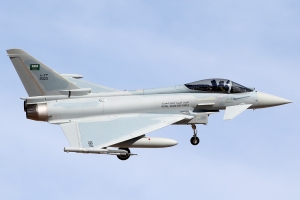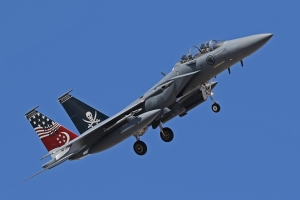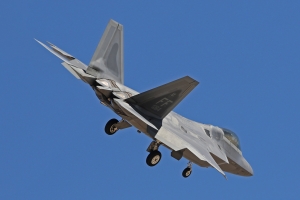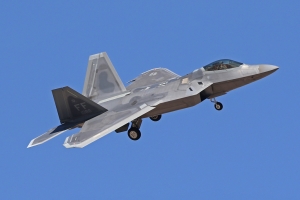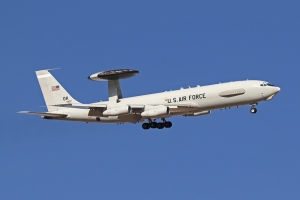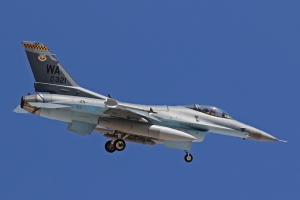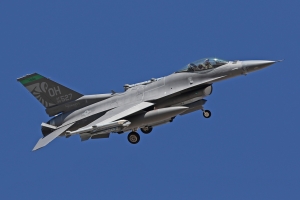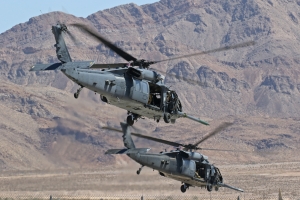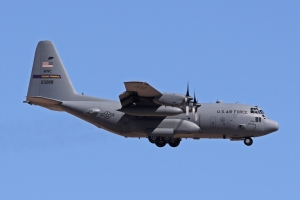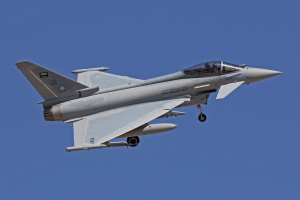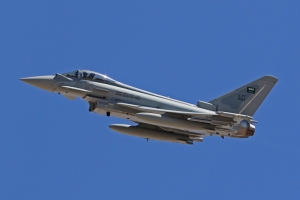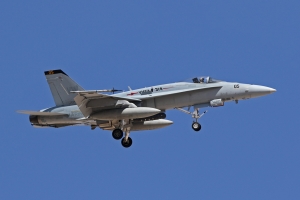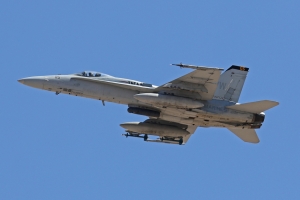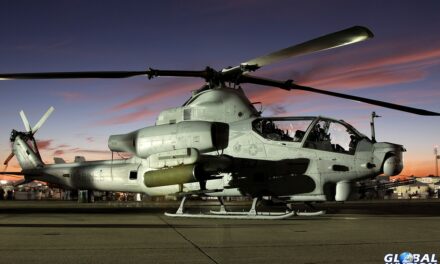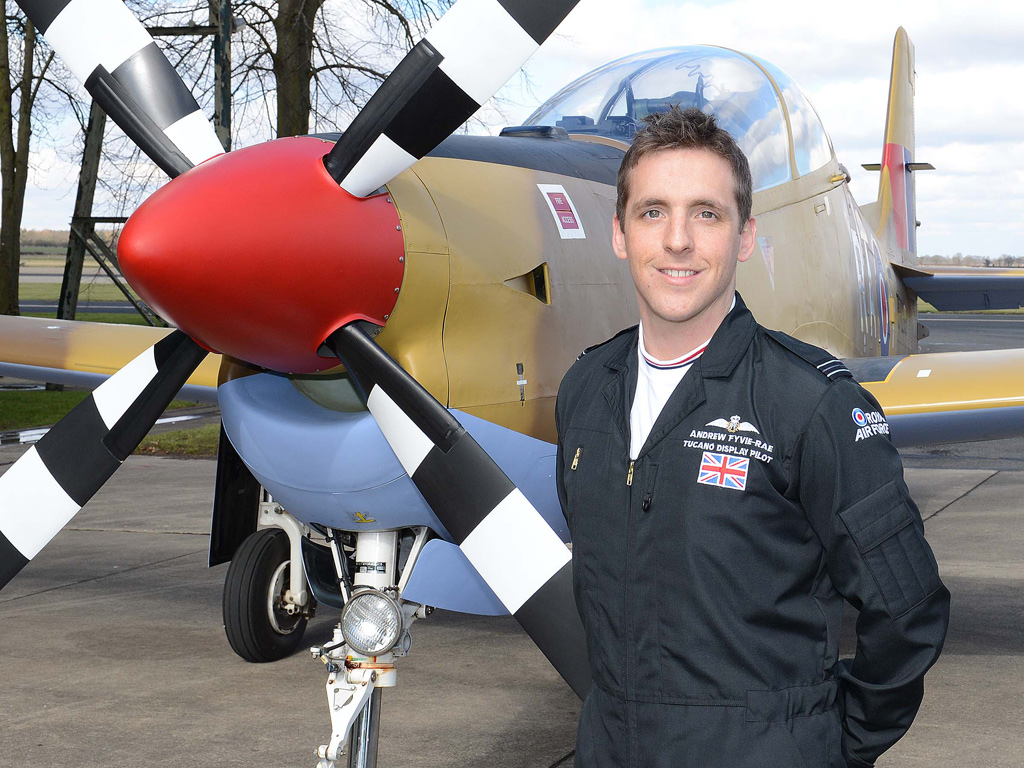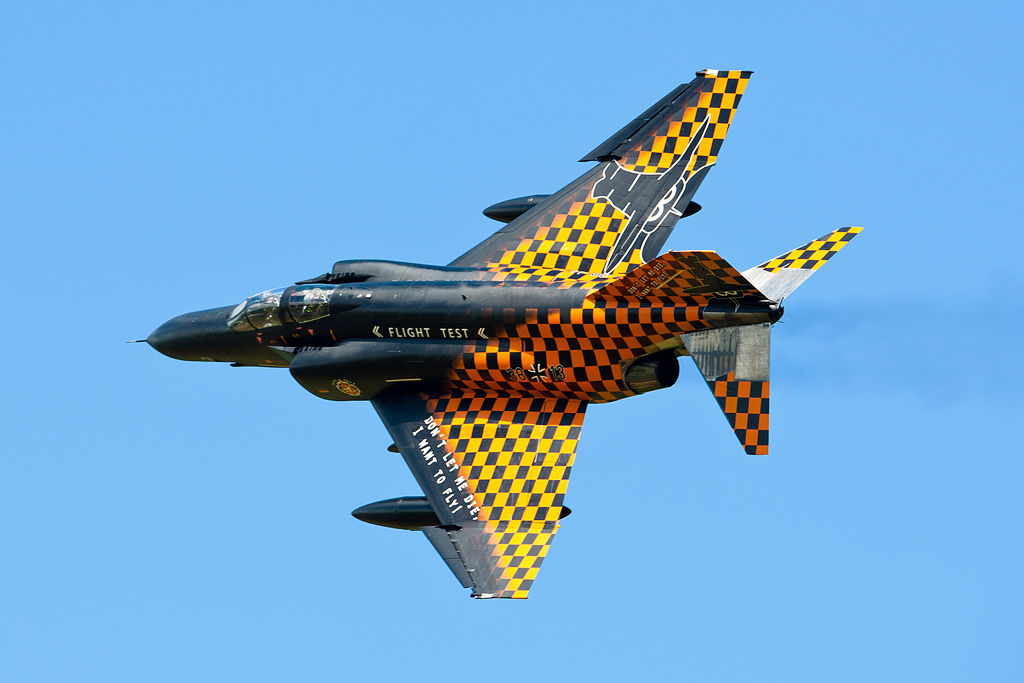Red Flag 17-4 took place at Nellis AFB, Nevada, between 14th and 25th August 2017, as the latest iteration of the long running series of realistic combat training exercises. Attracting participation from allied nations, alongside the US armed forces, the final Red Flag exercise of this year took place despite several cancellations in the weeks leading up to the exercise itself. Paul Dunn was there for GAR, with additional images by Chris Wood.
For the earlier exercises of this fiscal year, the headlines were stolen by the participation of the F-35 for the first time in large numbers, with the USAF bringing F-35As to both 17-1 and 17-3, and the USMC joining the fight with F-35Bs in 17-3 only. 17-4 lacked participation from the US military’s newest fighter aircraft, and was indeed a smaller exercise than other recent Red Flags, but still attracted foreign participation from Singapore and Saudi Arabia.
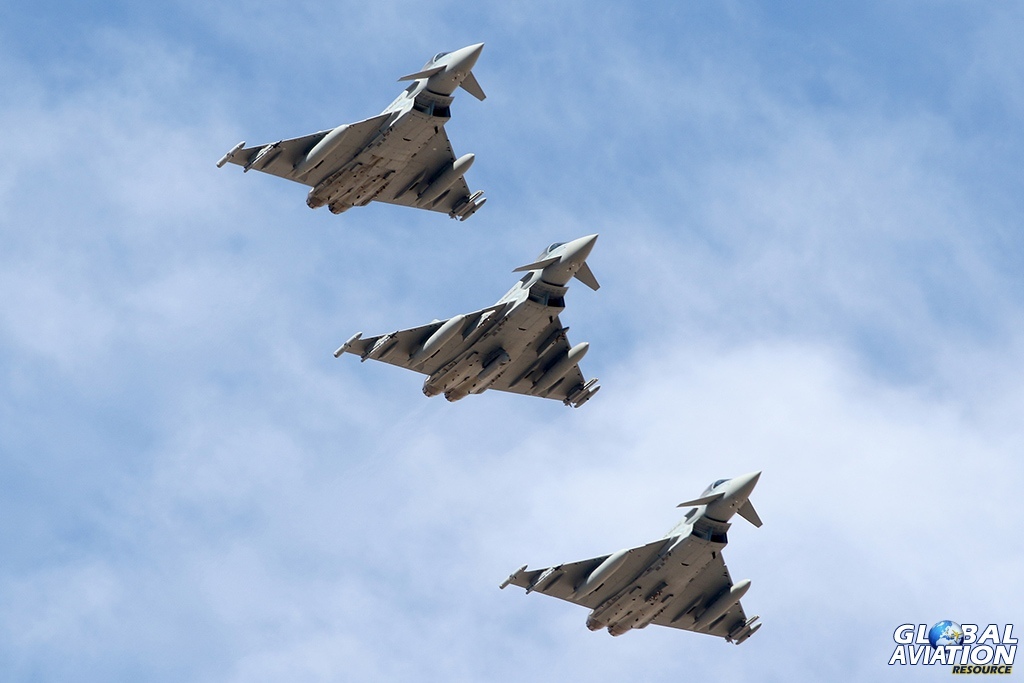
Three Royal Saudi Air Force Typhoons return to Nellis AFB, with the centre aircraft carrying a Damocles targeting pod © Paul Dunn – Global Aviation Resource
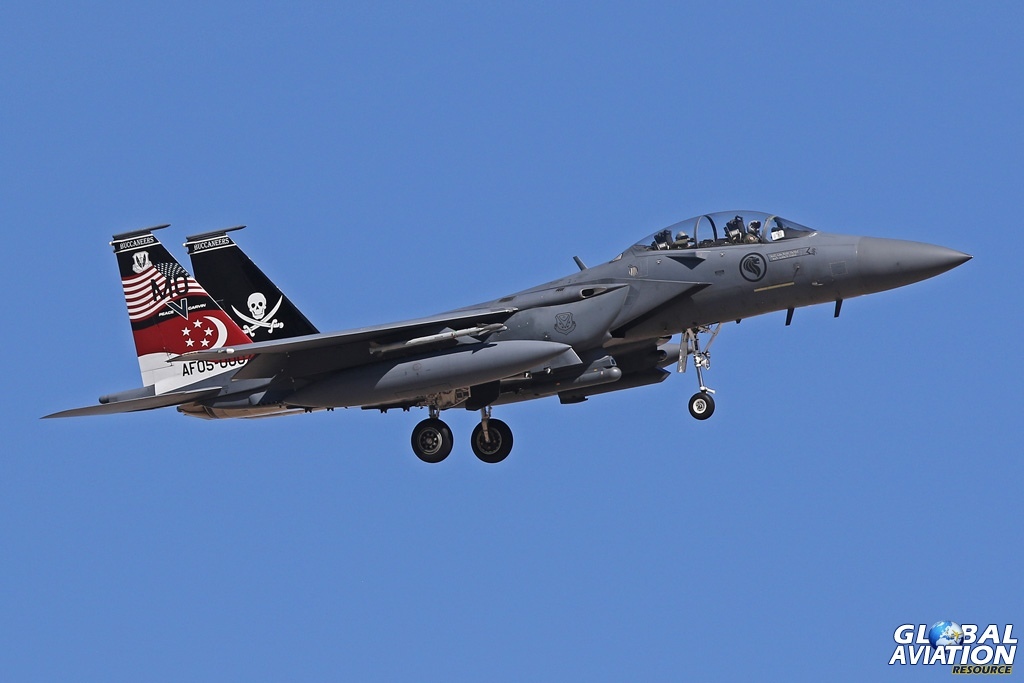
Republic of Singapore Air Force F-15SG Strike Eagle carrying markings to celebrate 10 year of the Peace Carvin V agreement which saw RSiAF pilots train on the F-15 in the US © Chris Wood – Global Aviation Resource
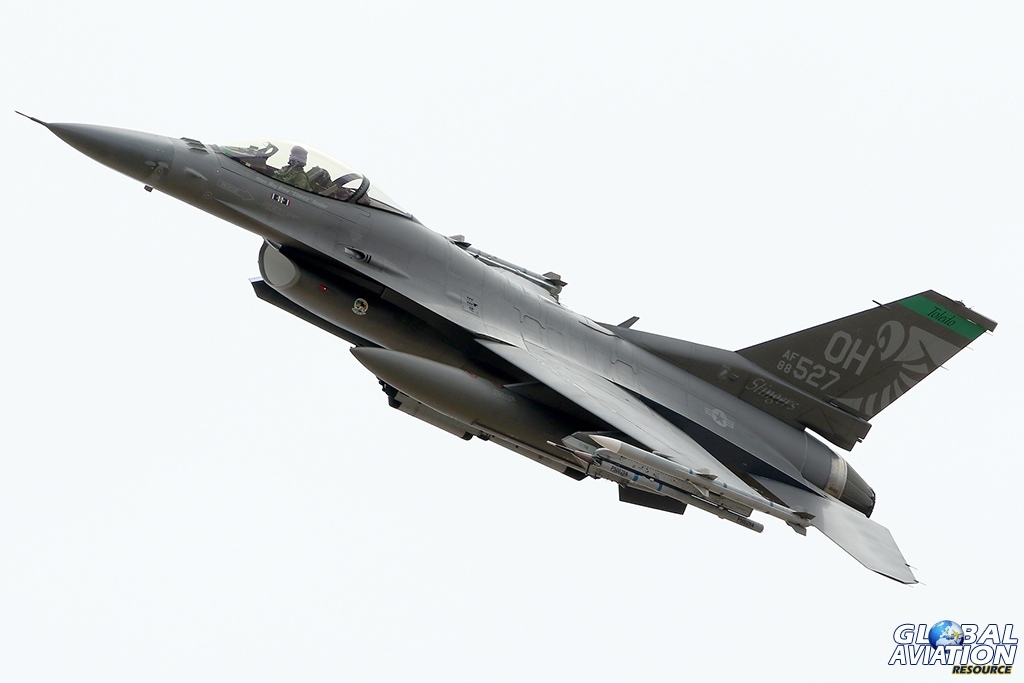
Ohio ANG F-16C in the latest HAVE GLASS V colour scheme ‘flexes’ on departure © Paul Dunn – Global Aviation Resource
There are known to be several ‘levels’ of Red Flag exercise, with participation depending on the security clearance of the nations taking part. For example, some exercises take place using only US assets, or additional participants from UK and Australia only, who are considered to be the United States’ closest allies. These exercises tend to involve the full gamut of surveillance, reconnaissance and electronic warfare capabilities and are thought to be the most complicated and realistic exercises, which fully simulate integrated modern aerial warfare.
The final exercise of each annual series tends to involve fewer of the more sensitive assets, such as dedicated ISTAR (Intelligence, Surveillance, Target Acquisition and Reconnaissance) aircraft, while attracting overseas participation from outside of NATO. These exercises are considered to be concerned more with improving cooperation between US forces and the nations involved, rather than simulating the full capabilities of the USAF and its closest partners.

A formation of F-16Cs from the 79th FS/20th FW returns to Nellis AFB © Chris Wood – Global Aviation Resource

AWACS support was provided by E-3s from NATO and the USAF, including this E-3G from 960th AACS © Chris Wood – Global Aviation Resource
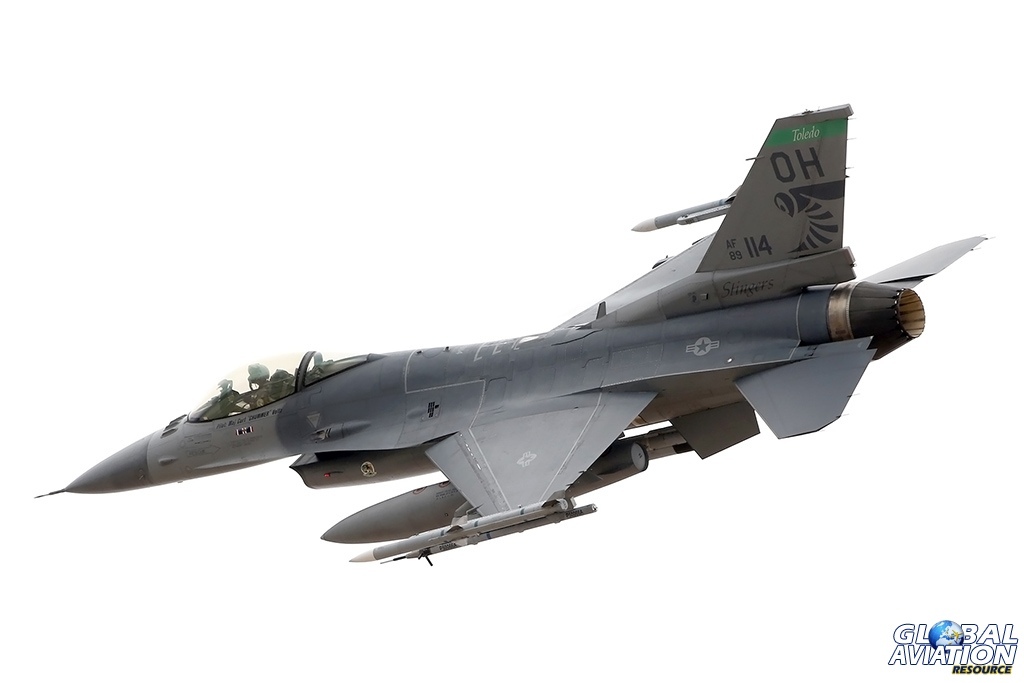
F-16C from the 112th FS OH ANG departs Nellis on a Red Flag 17-4 mission © Paul Dunn – Global Aviation Resource
As such, the list of participants for 17-4 lacked any surveillance aircraft, with the exception of the E-3 Sentry, which tends to operate in the AWACS role anyway, rather than having any capability to conduct surveillance of ground targets etc. In fact, the E-3 participation (both USAF and NATO aircraft took part) formed the only ‘heavy’ aircraft that took part in the exercise, with even the tanker support being cancelled at a late stage.
Interestingly, the lack of tankers didn’t seem to have too great an effect on the duration and scale of the mission; presumably a visit to the tanker isn’t always necessary to the Red Flag mission, but often included for realism and as a training point, with most real world missions requiring at least one top-up to increase the range of the tactical aircraft.

Red Air – a Nellis based F-16C from the 64th AGRS © Paul Dunn – Global Aviation Resource

E-3A Sentry from the NAEW&CF © Chris Wood – Global Aviation Resource
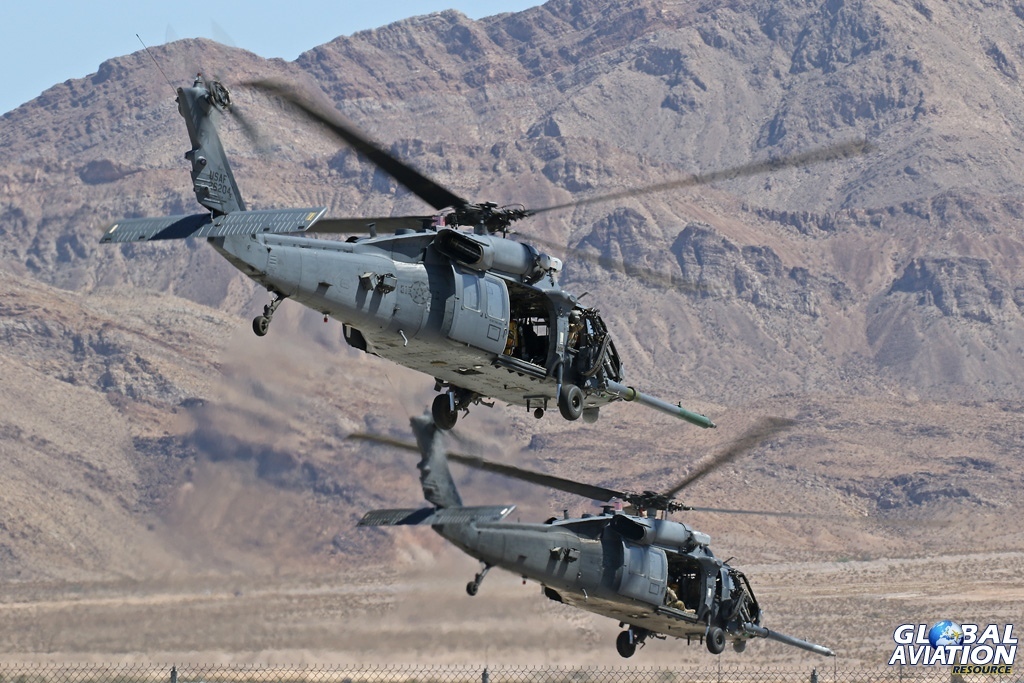
HH-60G Pave Hawks are regular participants in Red Flag exercises © Chris Wood – Global Aviation Resource
In terms of participation, perhaps the most interesting of the overseas air arms taking part was the Royal Saudi Air Force, who attended with eight Eurofighter Typhoons, the Saudi’s first Red Flag visit for their Typhoon force. The aircraft were taken from a mixture of Taif based squadrons, and although the main unit in attendance was listed as 10 Squadron, the majority of the aircraft came from 80 Squadron. As well as Red Flag missions, they were seen flying outside the Red Flag periods, including missions carrying dummy Laser Guided Bombs. Of interest was the Damocles targeting pod carried by several of the aircraft.
The other foreign player was the Republic of Singapore Air Force. The 428th FS is a US-based training squadron for the F-15SG Strike Eagle used by the RSiAF. As such, it is part of the 366th FW at Mountain Home AFB, and this was the unit’s second appearance at a Nellis based Red Flag. The squadron brought eight aircraft to Nellis, with all of the aircraft flying regularly as part of the missions, an impressive performance all round. The 428th FS was to be joined by the 425th FS, the RSAF F-16C training unit at Luke AFB, but that unit was one of the cancellations in the weeks leading up to 17-4.
RSAF Typhoon departing before the main Red Flag launch, carrying inert LGBs and a Damocles designator pod © Chris Wood – Global Aviation Resource
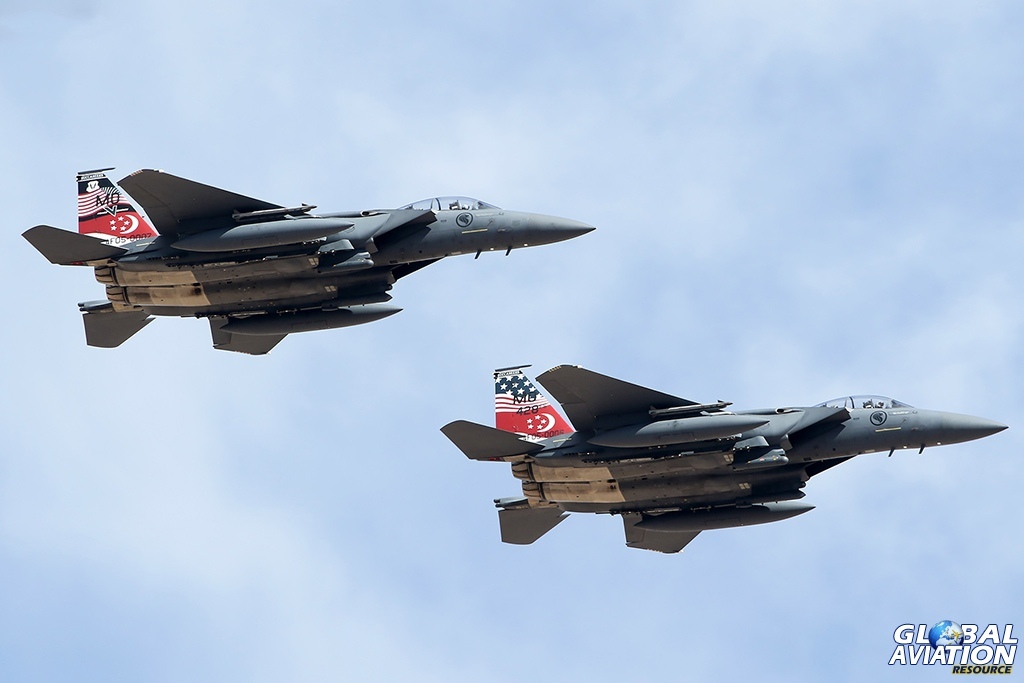
Both RSiAF special colours F-15SGs return following a Red Flag sortie © Paul Dunn – Global Aviation Resource

RSAF Typhoon turning finals © Paul Dunn – Global Aviation Resource
The USAF made up the bulk of the rest of the participation. The 112th FS/180th FW, Ohio ANG, brought its Block 42 F-16s from Toledo ANGB. Several of the jets carried the new Have Glass V paint scheme, which is apparently intended to reduce the aircraft’s radar cross section.
Further USAF F-16s came from the 79th FS/20th FW at Shaw AFB. This unit is tasked with SEAD/DEAD, along with more conventional strike missions, and aircraft from the 20th FW are virtually a permanent fixture during Red Flag exercises. Primary air superiority fighter for the Blue Force was the F-22A Raptor, with the 94th FS/1st FW from Langley AFB providing the aircraft and crews for 17-4.
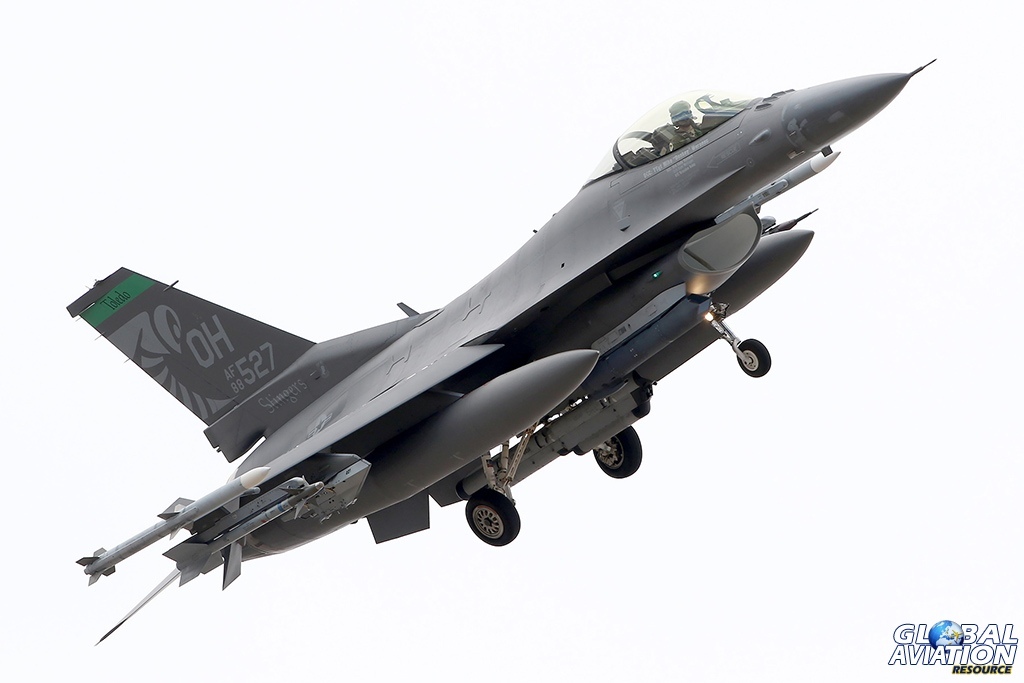
F-16C from 112th FS turns finals at Nellis AFB © Paul Dunn – Global Aviation Resource
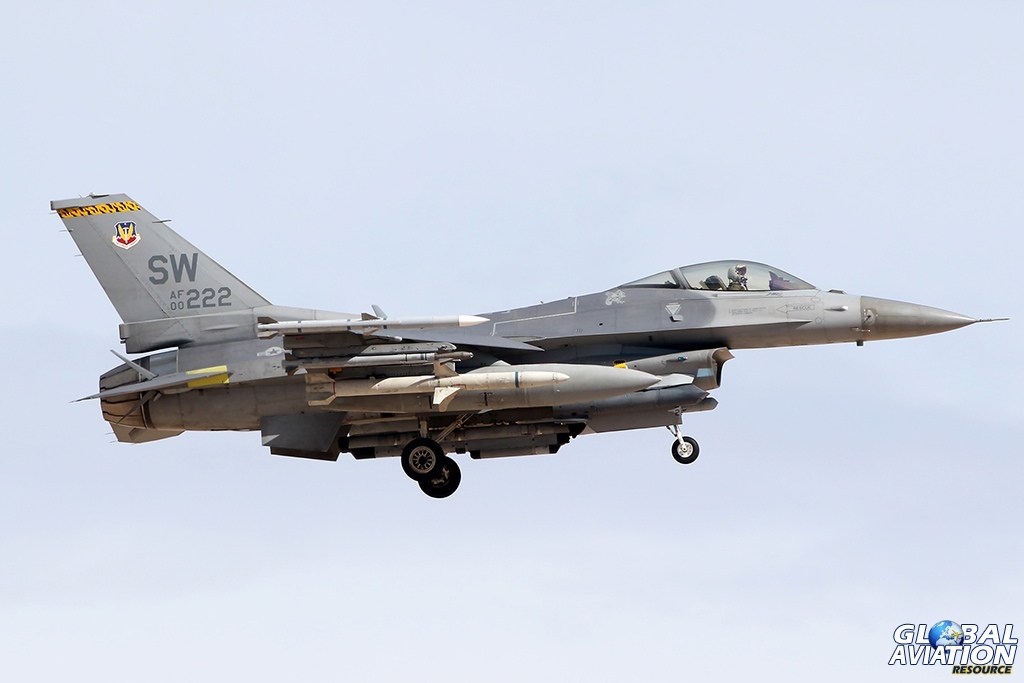
The 20th FW participates in almost all Red Flag exercises – for 17-4 it was the turn of the 77th FS © Paul Dunn – Global Aviation Resource

F-22A Raptor from the 94th FS/1st FW approaches Nellis AFB © Chris Wood – Global Aviation Resource
Rounding up the US tactical aircraft taking part in 17-4 were ten F/A-18 Hornets from the ‘Black Knights’ of VMFA-314 of the US Marine Corps. They brought eight A++ models and a pair of C models. The Hornets made the relatively short trip from MCAS Miramar, CA; the USMC participates in Red Flag exercises relatively often, with Hornets being the most common type attending.
As previously mentioned, participation from larger aircraft types was very limited, with no tankers, heavy bombers or ISTAR aircraft. A single C-130H Hercules deployed to Nellis from the 96th AS, with the aircraft taking part in some, but not all, of the mission profiles.
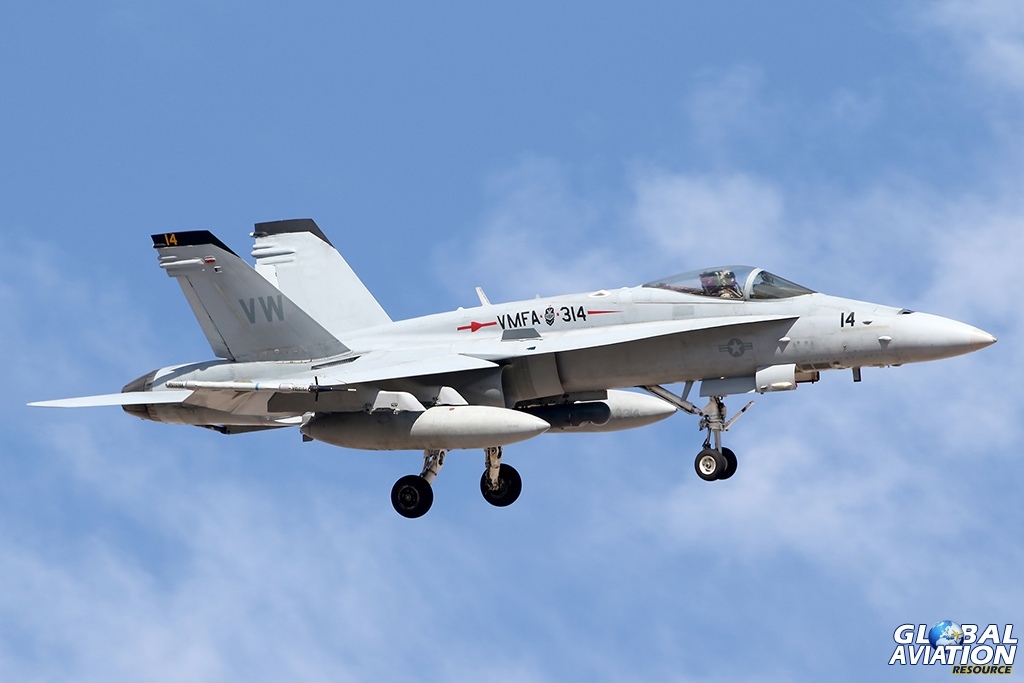
VMFA-314 sent a mixture of F/A-18A++ and F/A-18Cs to 17-4. This is one of a pair of C models to fly during the exercise © Paul Dunn – Global Aviation Resource

Large aircraft were scarce during 17-4. This C-130H from the 96th AS MN ANG was one of the few heavies to take part © Chris Wood – Global Aviation Resource
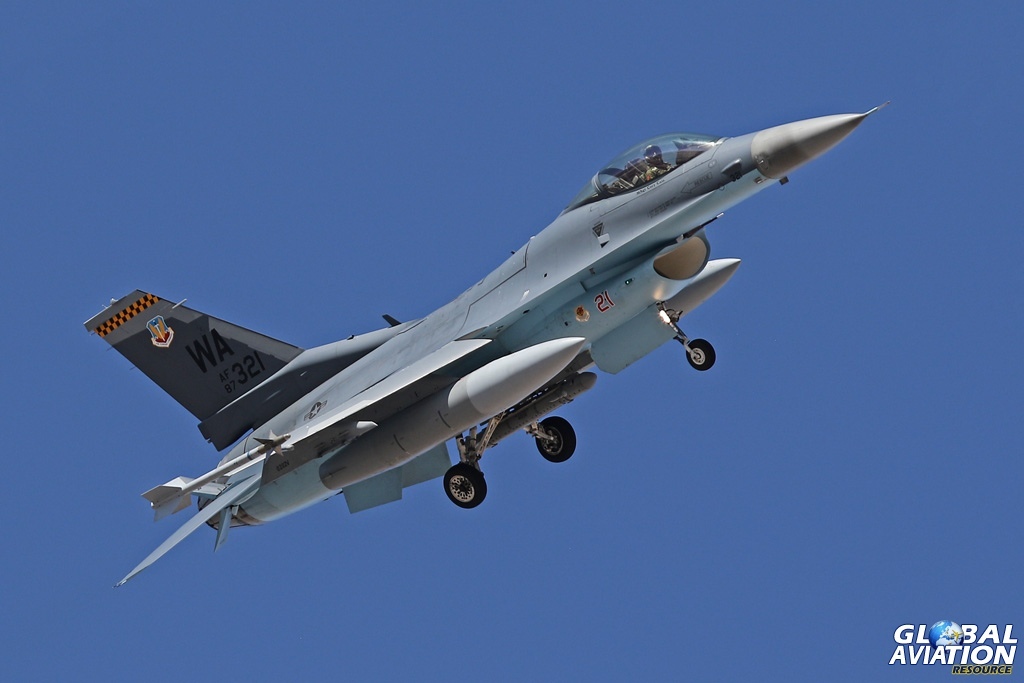
The latest aggressor colour scheme adopted by the 64th AGRS appears to replicate the current colours carried by advanced Russian Flanker variants © Chris Wood – Global Aviation Resource
Providing the airborne opposition, in the form of Red Air, was the based 64th AGRS and its F-16Cs. For most recent Red Flags, the 64th AGRS has been supplemented by A-4s and L-159s from the civilian contractor Draken International. Draken is now very closely integrated with the USAF’s dedicated aggressor squadron, with its aircraft being almost ever present at Nellis. However, Draken’s aircraft did not participate in 17-4, although they were very active in support of the USAF Weapons School, outside of the daily Red Flag cycle.
With the conclusion of Red Flag 17-4 came the end of the cycle of Red Flag exercises for this year, although Nellis AFB will remain busy with Green Flag and other smaller deployments for the rest of the year. Dates will soon be announced for next year’s sequence of exercises, with Red Flag remaining largest and most diverse series of wargames in the world.

